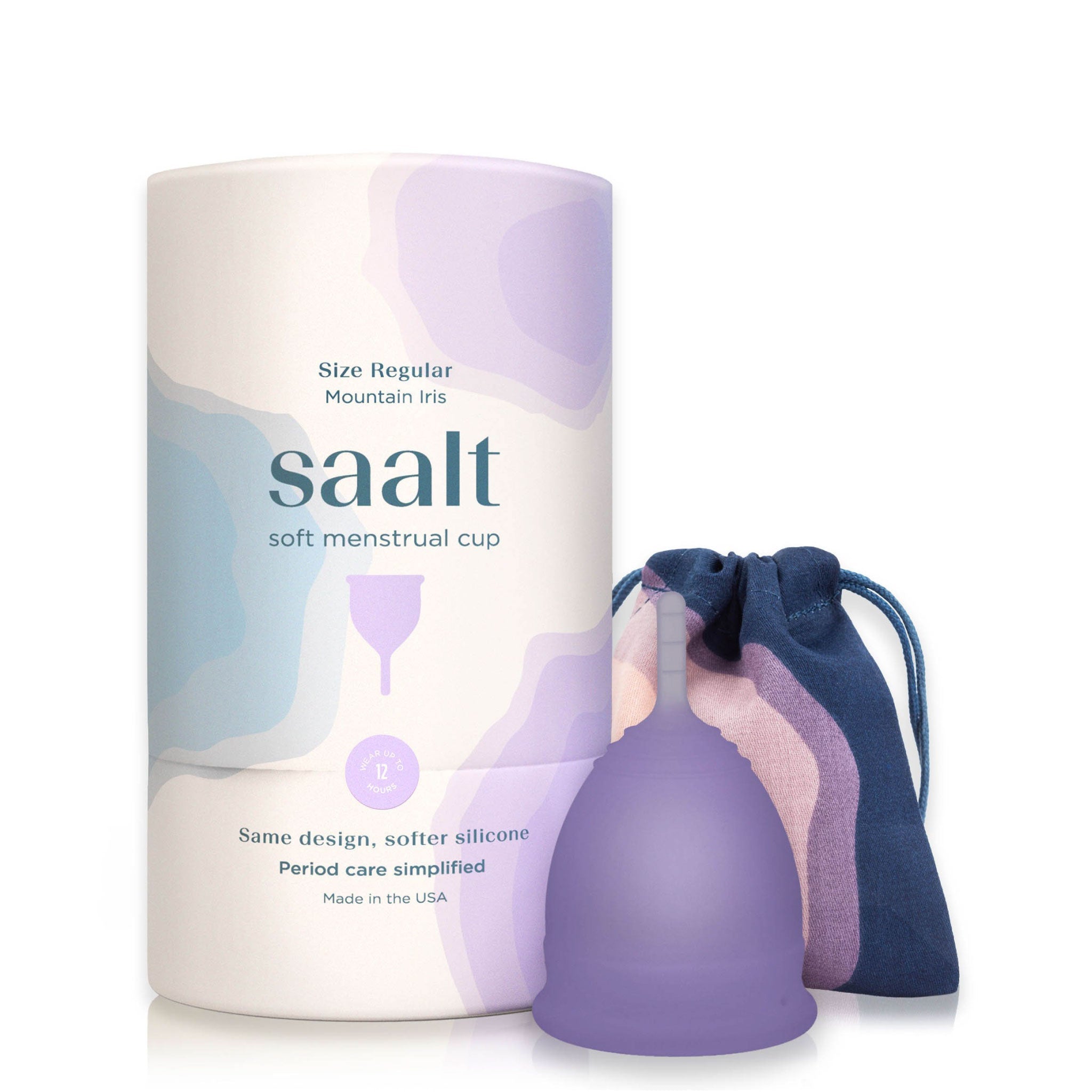Many conventional pads, tampons, and period underwear contain ingredients you won’t see on the box, yet they interact directly with your body’s most absorbent tissue. From synthetic coatings to artificial fragrances, these hidden chemicals can affect your pH balance, increase irritation, and raise long-term health concerns.
What Are PFAS and Where Are They Found?
PFAS (per- and polyfluoroalkyl substances), also known as “forever chemicals,” are among the most talked-about ingredients in period care today. These synthetic compounds don’t easily break down in the environment or the human body, and they’ve been linked to hormonal disruption, immune changes, and potential cancer risks.
In period care, PFAS can show up in high levels in products labeled “moisture-wicking” or “stain-resistant,” when fabrics have been chemically treated with PFAS-containing finishes. While PFAS get most of the spotlight, they’re not the only concern. Many conventional period products may also include:
- Fragrance additives that mask scent but disrupt the vaginal microbiome
- Phthalates found in plastic applicators or flexible materials
- Chlorine-bleached fibers that leave behind trace dioxins
- Synthetic dyes can lead to skin irritation
How Chemical Exposure Affects Vaginal Health
Anyone who’s dealt with itching, unexpected discharge, or sensitivity during their cycle knows how disruptive those symptoms can feel. Chemicals like PFAS and dyes don’t just sit on the surface—they’re absorbed through vaginal and vulvar tissue, which allows compounds to enter the bloodstream more readily.
When that happens, the body’s natural balance can shift. Vaginal pH levels may become imbalanced, making yeast infections or bacterial overgrowth more likely. Hormonal systems may also be affected, particularly with prolonged or repeated exposure over many years of cycling.
However, these reactions aren’t rare. Many people who menstruate deal with monthly irritation and have no idea their period products might be the cause. Reading labels and choosing non-toxic period products that skip harmful ingredients is a powerful way to take back control of your cycle. For example, our menstrual cups are made with 100% medical-grade silicone and are completely free of BPA, latex, and rubber. We color our cups with pigmented silicone—no harmful dyes required. That’s the level of care we believe you deserve every single month.
Introducing Our Range of Non-Toxic Period Solutions
Tired of dealing with itchy pads, bulky liners, or tampons that leave you dry? Us too. Many conventional period products include harsh fibers, chemical fragrances, and irritating dyes. That’s why our reusable collection is made to feel comfortable from day one and designed to meet real-life needs. After all, when you're on the hunt for the best nontoxic period products, you deserve options that work with you.
Reusable Period Underwear That Feels Like Your Favorite Pair
Forget the crinkly, sweaty feel of traditional pads. Our period underwear is soft, breathable, and made to move with you, without harmful dyes, harsh chemicals, or plasticky barriers. Each pair is built with absorbent layers that hold leaks while staying dry against your skin. They're also lightweight enough to wear under leggings or jeans without feeling bulky. From lounging on your period to heading back to work post-hysterectomy, Saalt’s moisture wicking underwear brings comfort to your everyday routine without compromising on absorbency or discretion.
Medical-Grade Menstrual Cups for Internal Protection
When tampons feel drying, unreliable, or like they just don’t fit your lifestyle, a reusable cup can offer a more body-friendly alternative. Our non toxic menstrual cup menstrual cups are made with 100% medical-grade silicone, and they’re free from BPA, latex, and phthalates. Each cup is soft enough to flex with your anatomy but firm enough to hold its shape for up to 12 hours of leak-free wear. Many people start with a cup to skip the chafing or waste of disposables, and stay for the simplicity it brings to their cycle.
Flexible Period Discs for a Barely-There Feel
For those who prefer internal protection without the pressure of a suction seal, period discs are a game-changer. They sit in the vaginal fornix and offer a more universal fit for many body types. Made from the same medical-grade silicone as our cups, Saalt’s discs are free of harmful additives and designed to be worn for hours with minimal sensation.
New to discs? We’ve created a full how to insert menstrual disc guide that walks you through everything, from positioning tips to how to remove one without the mess. It's all part of making non-toxic period care feel more approachable because real comfort starts with real knowledge.
Benefits of Switching to Reusable, Non-Toxic Options
When we rethink period care, comfort can become the constant rather than the exception. Choosing reusable, non toxic feminine products can reshape every cycle, whether you’re experiencing your first period or navigating hormonal changes later in life. Here’s how these options make a difference:
Relief for Sensitive Skin
Anyone who’s worn a pad for too long during a hot afternoon or dealt with chafing from synthetic materials knows how uncomfortable disposables can be. Many conventional period products are made with fragrances, bleached fibers, or synthetic dyes—all of which can trigger reactions or throw off your body’s natural balance. Reusable products made from medical-grade silicone and soft, breathable fabric give your skin room to breathe without the irritation.
Sustainability You Can Feel Good About
Using reusables means fewer pads and tampons going into landfills, and fewer plastic wrappers tossed after just one use. For anyone who’s ever opened a bathroom trash bin mid-cycle and winced, this shift can feel like a breath of fresh air. From leakproof period underwear to long-lasting menstrual cups, each reusable option is designed to last through years of wear.
Real-Life Savings That Add Up
Period care adds up faster than many people realize. The average person uses about 11,000 disposable period products over a lifetime. At $10 a box, that adds up fast—not to mention the cost of pain relief, heating pads, and other period care needs that often come along for the ride. The National Organization for Women puts the lifetime cost of managing a menstrual cycle at close to $18,000. No wonder so many of us are ready to question the 'just deal with it' mindset we grew up with.
Empowered Body Awareness
Reusable period products invite us to reconnect with our own bodies and natural rhythms. Whether it's learning how your flow changes throughout your cycle or choosing the internal or external option that fits your lifestyle, these products put more knowledge in our hands. Making the shift to non-toxic, reusable period care is about more than just a new product–it’s about reclaiming comfort, confidence, and agency in something that touches our lives.
Caring for Your Non-Toxic Menstrual Products
Choosing non-toxic period products is a strong first step for your health and for the planet, but care doesn’t stop there. How you maintain your reusable menstrual products has a direct impact on their performance, lifespan, and continued safety.
Menstrual Cups and Discs
Rinse with cold water after each use to help prevent stains, then follow with warm water and a gentle, fragrance-free cleanser like our Saalt Cup Wash. Be sure to clean around the grooves and suction holes. At the end of your cycle, boil your cup or disc in water for five minutes or use our Saalt Steamer for quick sanitizing. Always allow it to air dry fully before storing it in a breathable pouch, never in an airtight container.
Leakproof Period Underwear
After wearing, rinse thoroughly with cold water until it runs clear. Machine wash on a gentle cycle using a mild detergent like our Saalt Period Underwear Detergent, which is specially formulated to preserve absorbency and protect technical fabrics. Avoid bleach and fabric softeners, as they can break down the inner layers. Overall, air drying is the best way to maintain softness, breathability, and leak protection over time.
Read more:











